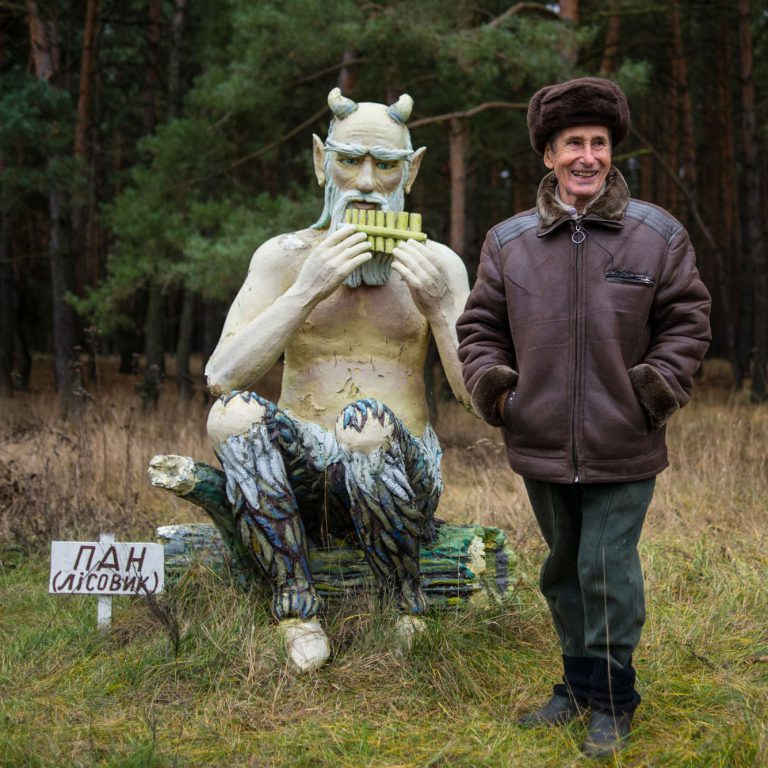Panasivka village is located on the left bank of the river Psel in the Myrhorod region of the Poltava province. It is hard to find this place on the map, and it is even harder to get to this distant spot on a means of public transport. There are only 90 people living here. It seems that Panasivka cannot impress you with anything special until you notice the sculptures of mythical heroes in one of the backyards. This is where the tour to the Poltava version of antiquity starts.
A Ukrainian flag is waving near “Panasivka” sign. It is the reference point for visitors. Valerii Yermakov, a sculptor and an artist, lives here. He is not famous among in-crowd, but he admits that he never wanted to be popular. In a tiny hut, where everything is hand-made, he lives alone after his wife’s death. You cannot confuse his backyard with any other: he transformed it into an open-air gallery placing his own sculptures here.
The host looks happy to welcome unexpected guests because he invites us to his place immediately.
— Oh, I missed the car with the bread. Got carried away by the conversation. Never mind, will buy it next week. Have some more bread.
The bread is delivered here only once a week. Panasivka was once a big village, now it’s a small one. Valerii is one of the youngest villagers here. He is only 79.
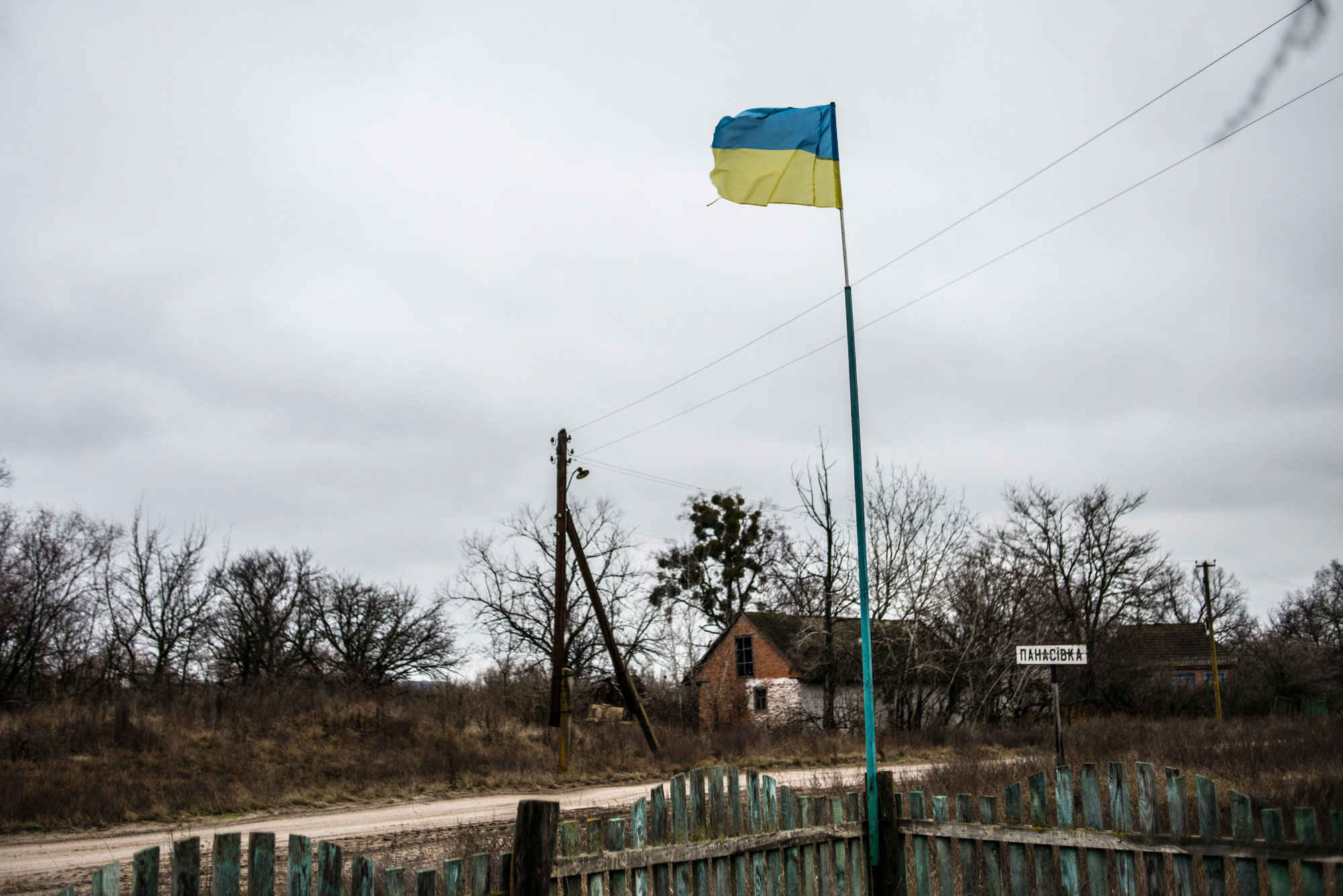
A wife — more than a muse
Valerii has been living in Panasivka for 11 years already.
He was living in Poltava before but his wife wanted to move somewhere where she could do gardening. Valerii doesn’t deny it: he did everything to please his love.
— A village here and a village there. I don’t care, I only want to create.
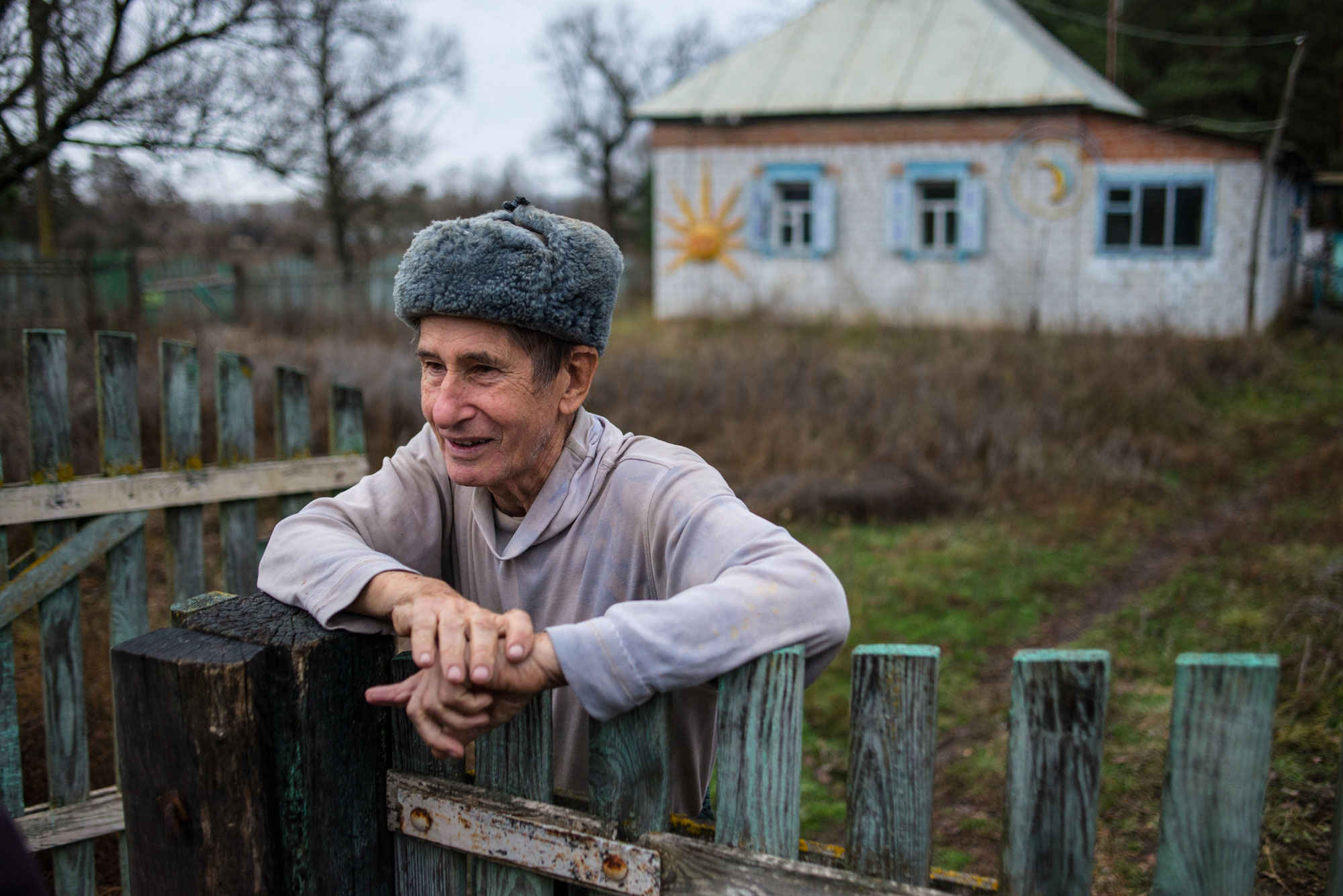
The sculptor confesses that his wife was not his muse, as one may expect from the artist. She was more than this: she never intervened and gave him space to create. Artists value such freedom a lot. Unable to hide his pain and sadness because of loss, Valerii recalls his artistic tandem with the wife with exceptional gratitude:
— When I needed someone to tell me what’s better and what’s worse, I consulted my wife. One day she advised me to create Vakula. And I did it. She saw a picture in the magazine and said, “Do it!” No problems. I feel bad without her…
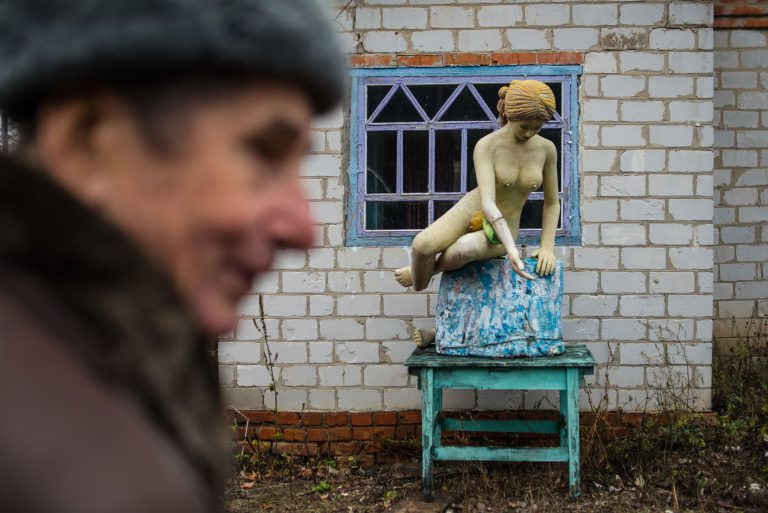
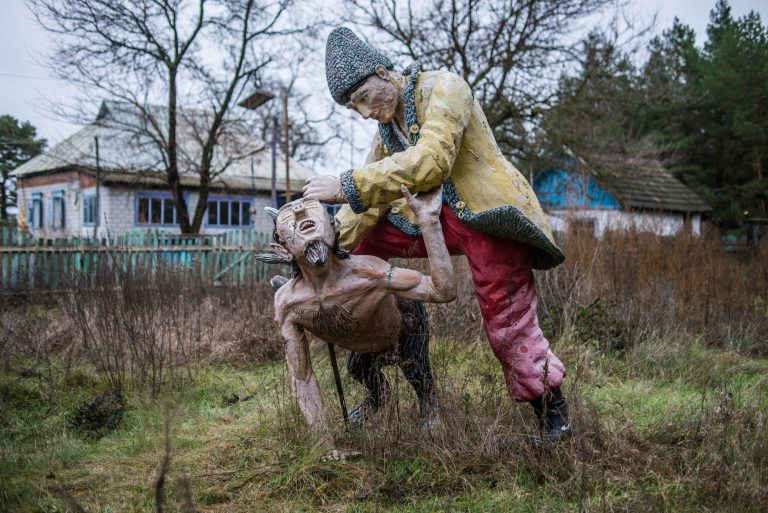
slideshow
From Greek gods to Gogol’s heroes
Valerii mentions the sculpture of Vakula in the conversation several times. This sculpture seems to embody his bizarre and controversial artwork. He has a special story about Vakula. He says that there was a guy who came from the village to take measure:
— And his mom says, “Why do you want to make a devil out of him?!” — “No, no, not a devil, Vakula…!”
There is also a sculpture of a woman who reminds a mermaid with blue hair:
— I don’t even know who she is: some people say it’s a mermaid, others claim that it’s a nymph. I don’t argue.
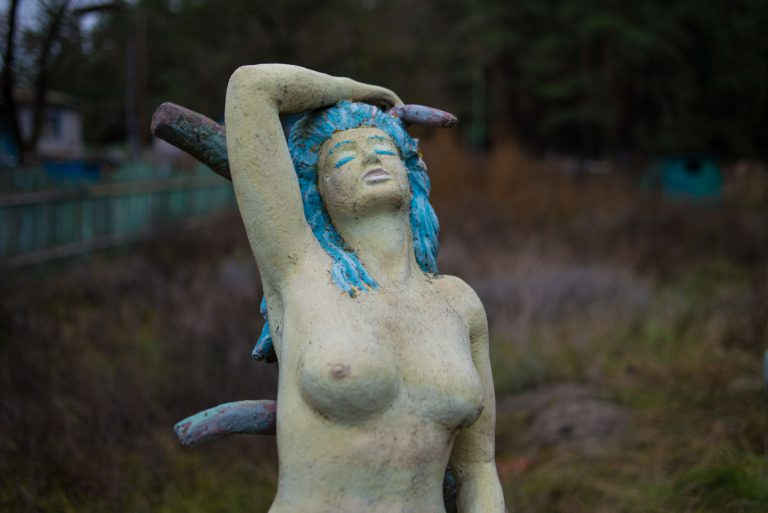
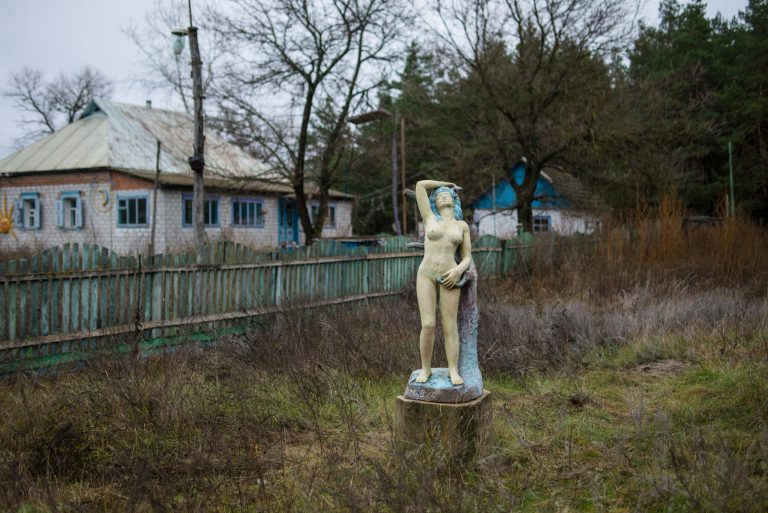
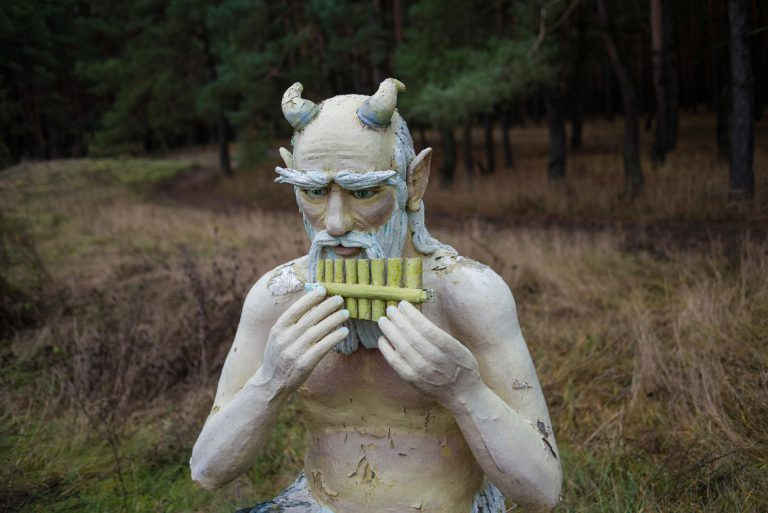
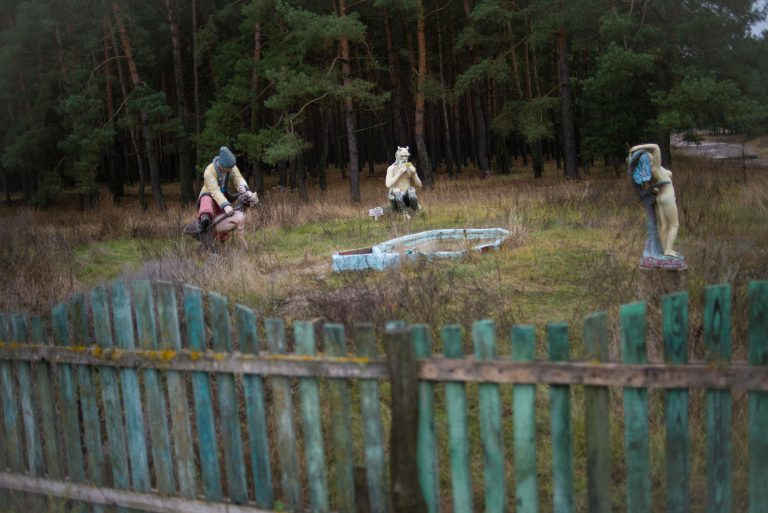
slideshow
There is another Greek god in Valerii’s backyard so he explains.
— He was born on the Olympus, the same place where Zeus was born. His mother goddess declined him but he became gods’ favorite instead. He grew up and decided to compete with Apollo in music, and lost it, of course. Apollo was a god, so he was obviously stronger, he took his ears and twisted them. Offended, the god dragged himself into the wood to play the pipe. He plays good songs there now.
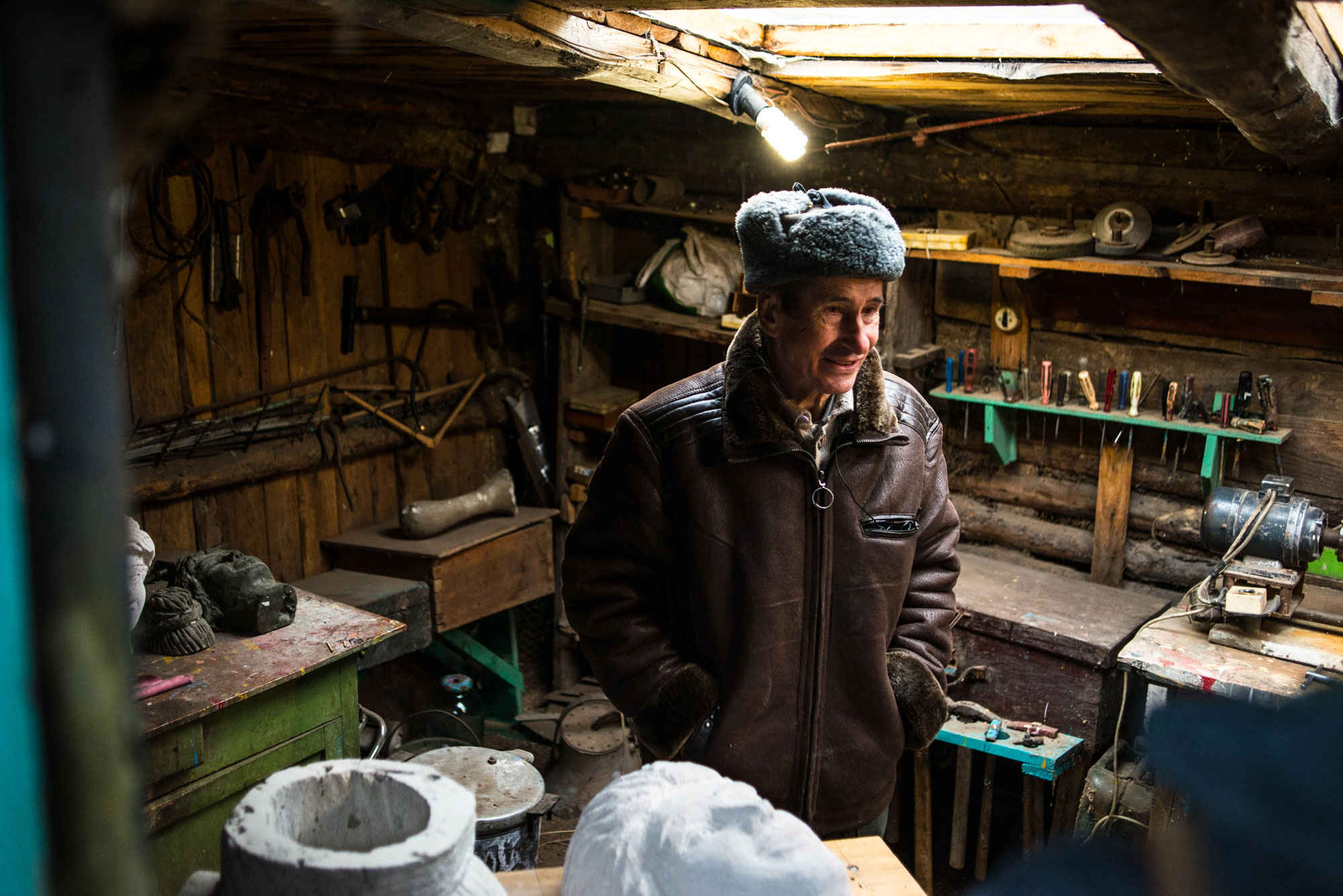
Art secrets
The artist doesn’t hide his art secrets: he says that when there is a good tool it’s easy to have gifted hands. He cuts sculptures with a sharpened knife only, otherwise the cut won’t be so accurate. Valerii doesn’t have any special education, he attended some classes for amateurs only. But he couldn’t stay longer than a month or two there, he seemed to lack patience. He was studying mostly using magazines.
The sculptor invites us to his place. It’s green inside, there are a lot of flowers his wife left to him so he takes care of them. Everything is stuffed with pictures and sculptures. There is one work which is half-finished. Valerii says he can’t wait for the winter to come to never budge from a place and finish all he needs to finish.
— Here is Сupid holding arrows. It will be a two-meter sculpture or even more. I love mythology and take a lot of images from it.
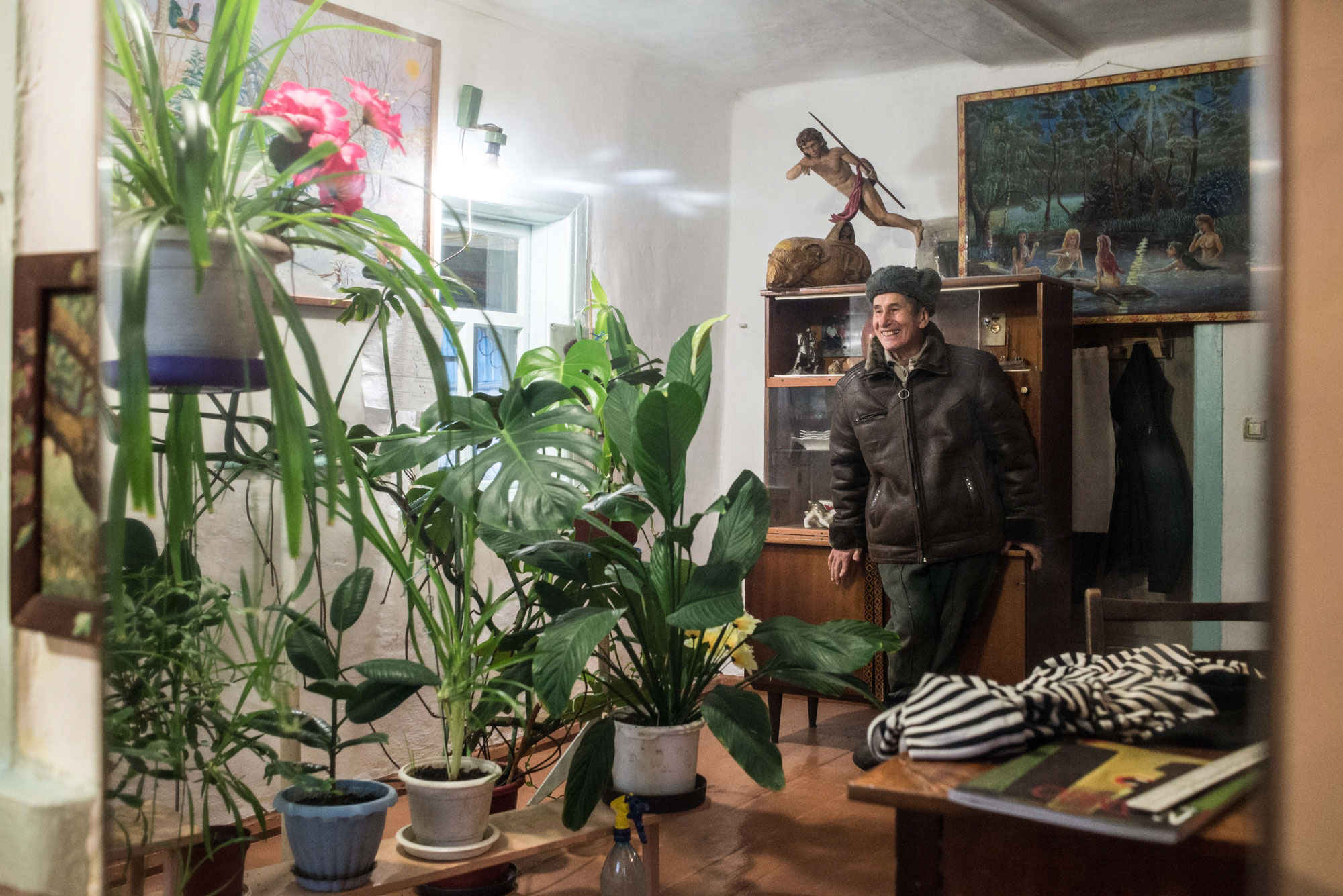
Yet, the fan of mythology and antiquity doesn’t have any relevant books. There is only the black volume of the Holy Bible on his table.
— Never went to the library, and I don’t want it. You need some space for a library. I visited city library often and had a circulation department there. Read a lot of technical literature.
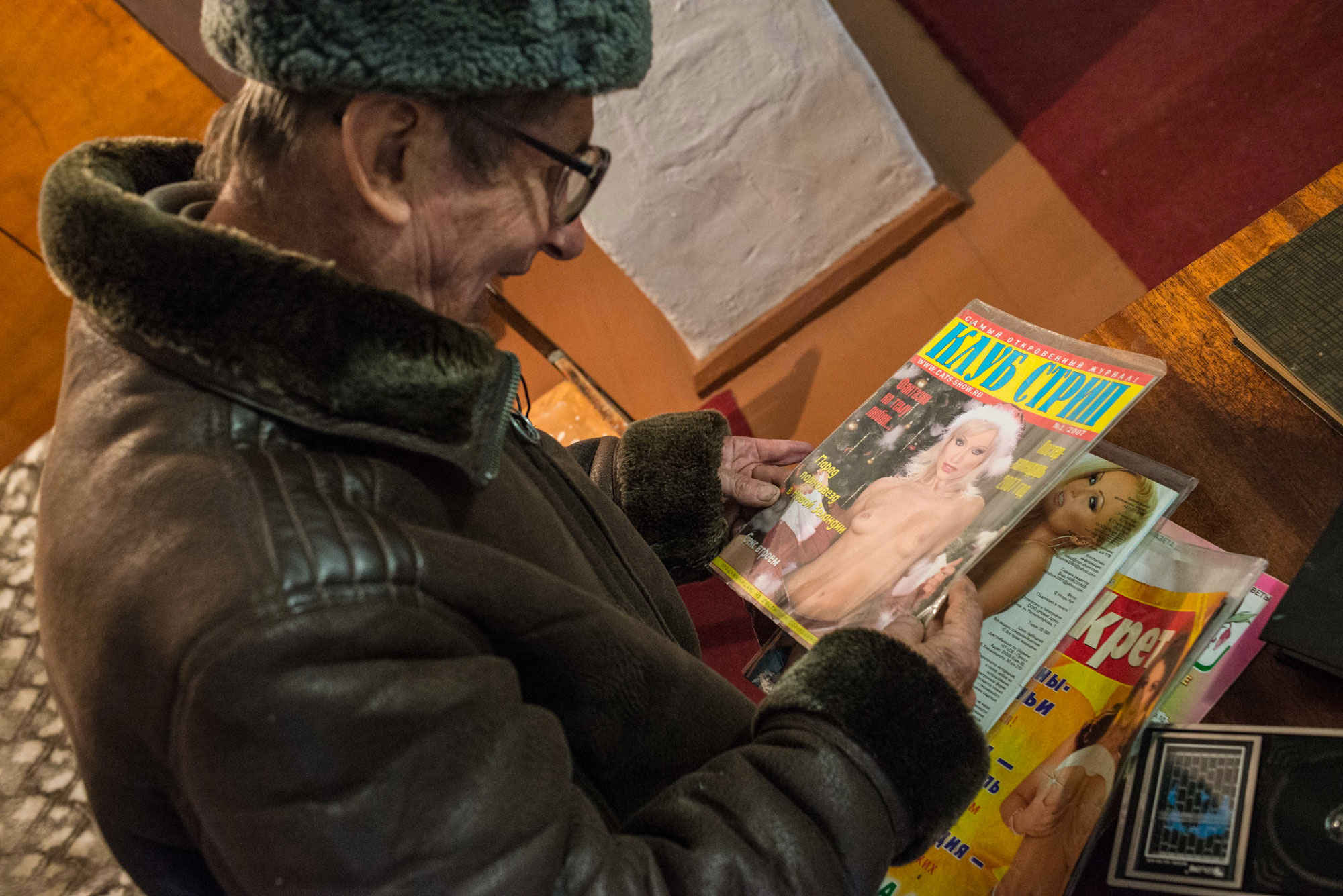
The artist has a collection of magazines instead. He doesn’t have any models that’s why all his sculptures are from the pictures of the magazines:
— Faces are mixed: I like big eyes of this model and the nose of this model. That’s how I take a Greek nose and Venus and transform them the way I want.
The same with the body of the sculpture: I look at the pics in the magazines, choose what I want and measure the half value, the coefficient.
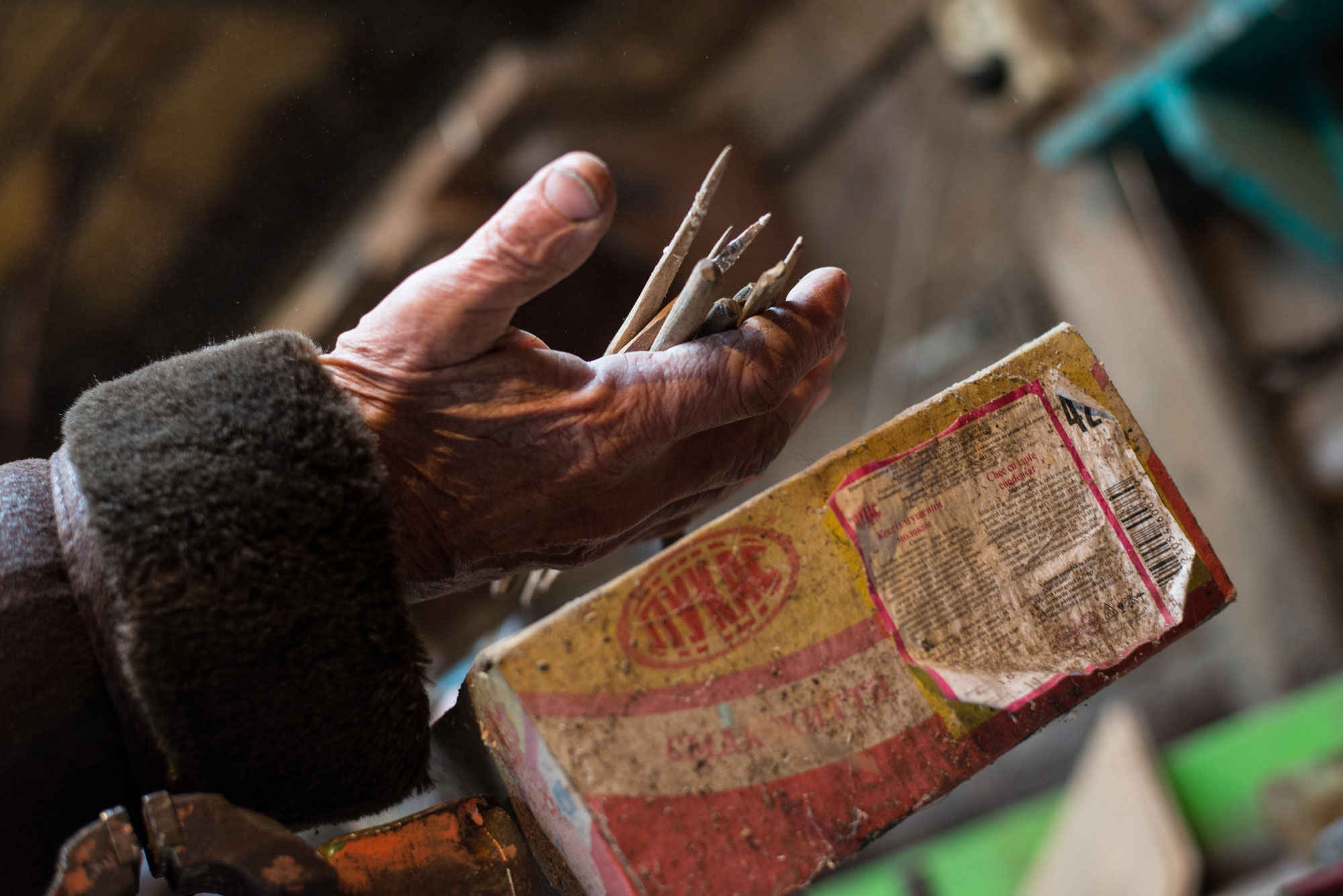
Art not for sale
The artist doesn’t sell his pictures and sculptures. He says he just doesn’t want to:
— I visited some exhibitions, I was at Sorochyntsi fair — but my heart isn’t in selling them. I feel it would be cheapish. I spend lots of energy on them, put my heart in them. Can’t sell them for much money: can only give them away.
He says he gave his works to the school and the church. And actually nobody asks him about selling:
— They don’t know that I’m doing it. I don’t show off as well, you are the only one I can talk to about my artwork. Maybe it’s because I live alone.
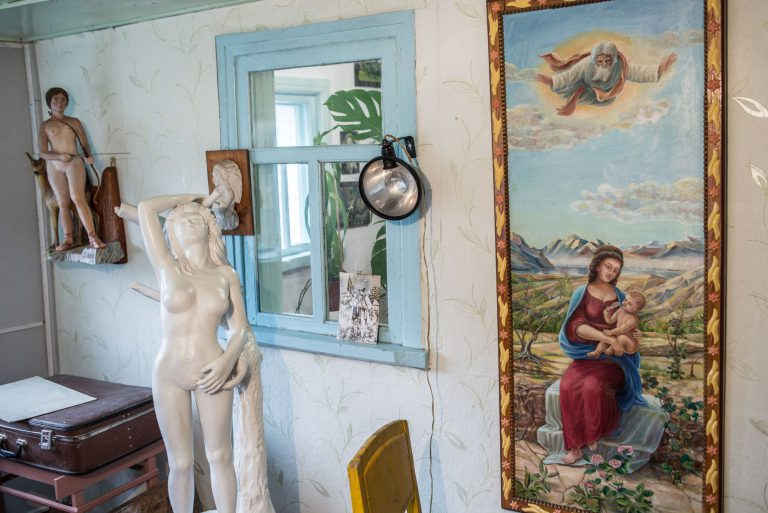
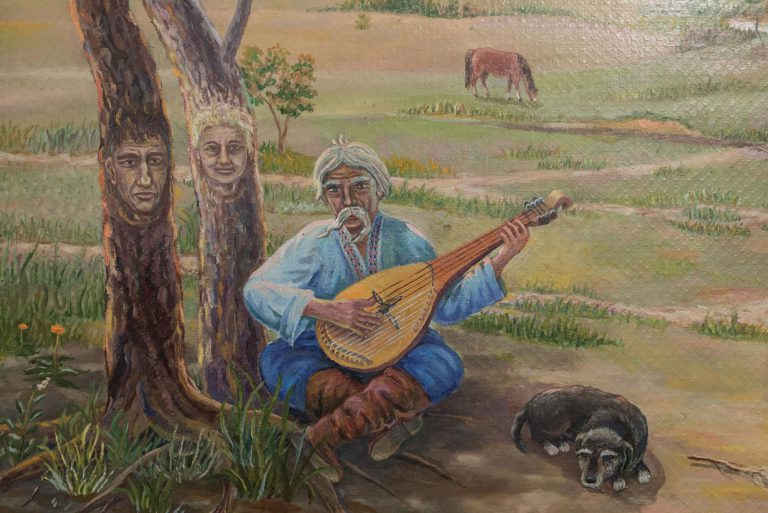
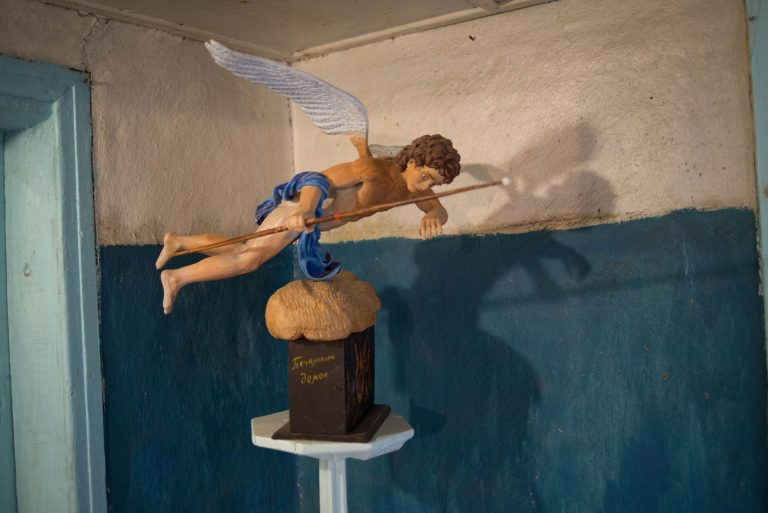
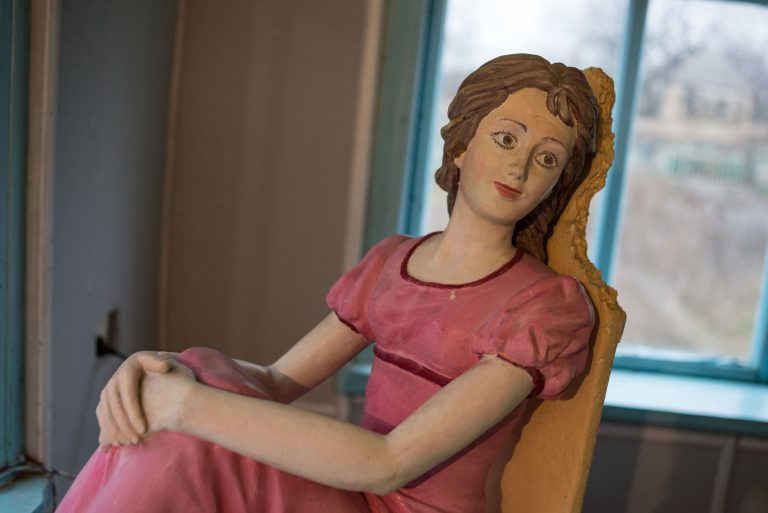
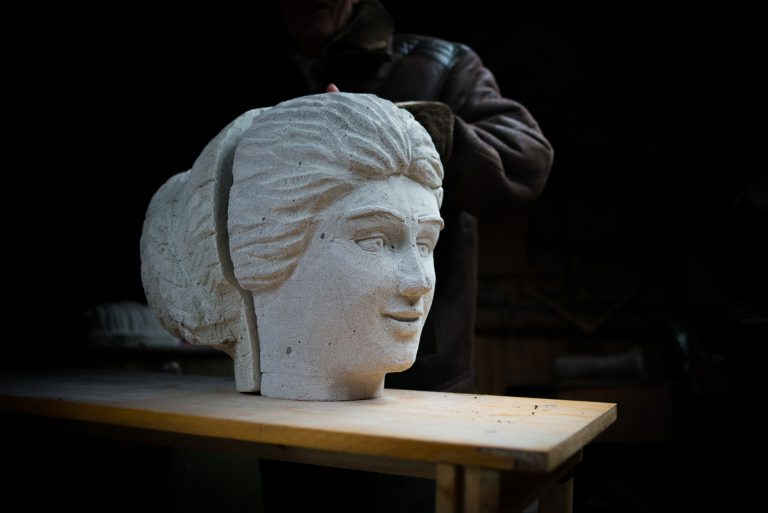
slideshow
Valerii seems to be very self-critical, he acknowledges his mistakes and is not afraid to improve his works:
— Here is Mavka from “The Forest Song”. When I heard about, it touched me deeply — felt tears in my eyes. Many directors try to make a screen version of this book now. And I decided to make my own version. Can’t say it’s very good… I want to remake it, make it more sophisticated, I am not satisfied with what I have now. I made it from plasticine years ago and then it melted down under the sun, I restored it and made it in сement. Nothing can harm her anymore.
The sculptor only lacks time:
— Give me time, and I will do everything (pointing at the sculpture in the corner of the room which he can’t finish for some time).
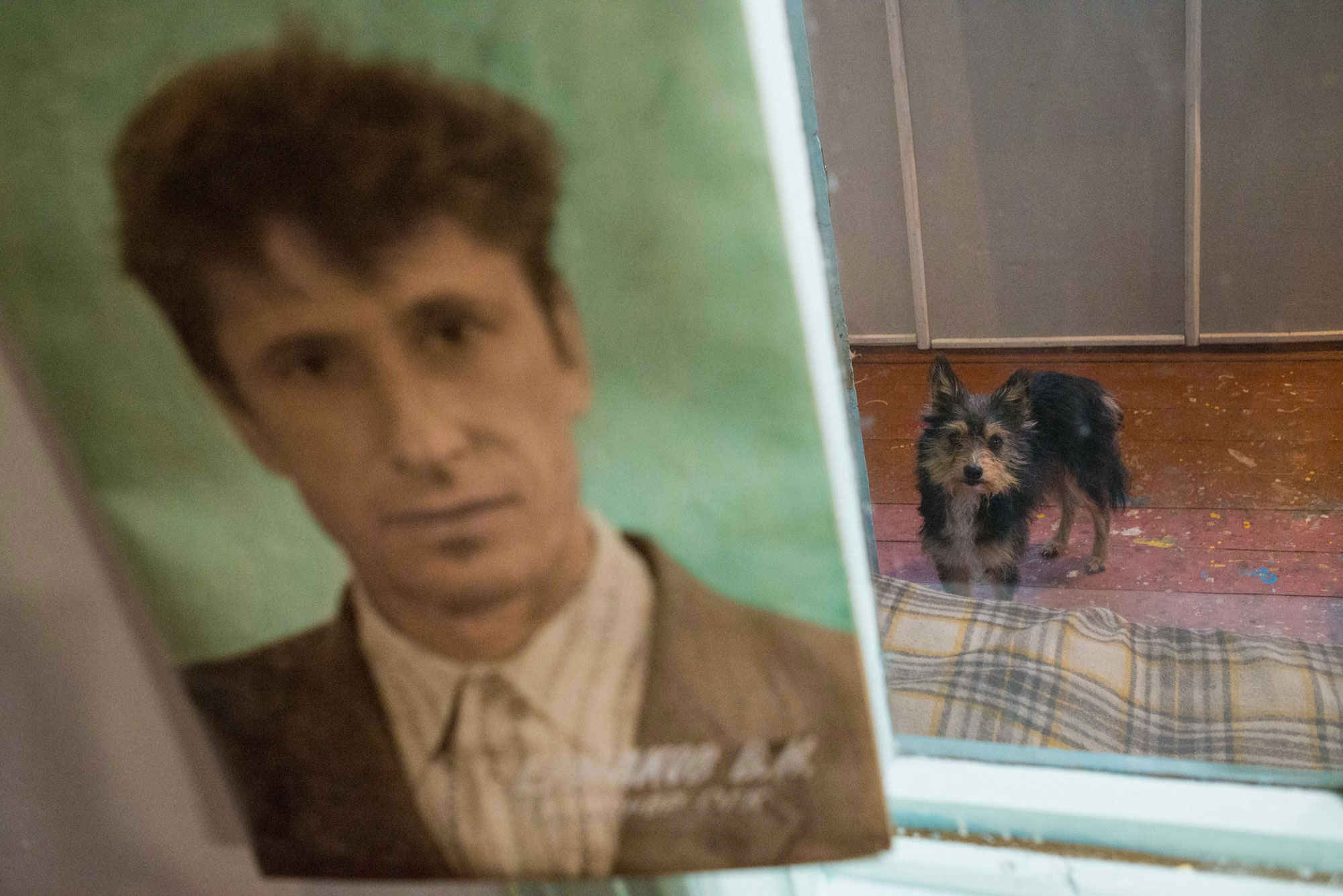
He is worried about firewood as he can’t afford to buy it even if he spends the whole pension on it. Most of the time he spends on storing up firewood: cutting, bringing from woods on a hand-barrow. He says it takes months to do it. Not weeks.
Valerii admits that if a well breaks down he needs to fix everything. But he doesn’t give way to problems. He encourages himself all the time:
— It doesn’t matter, so far so good.
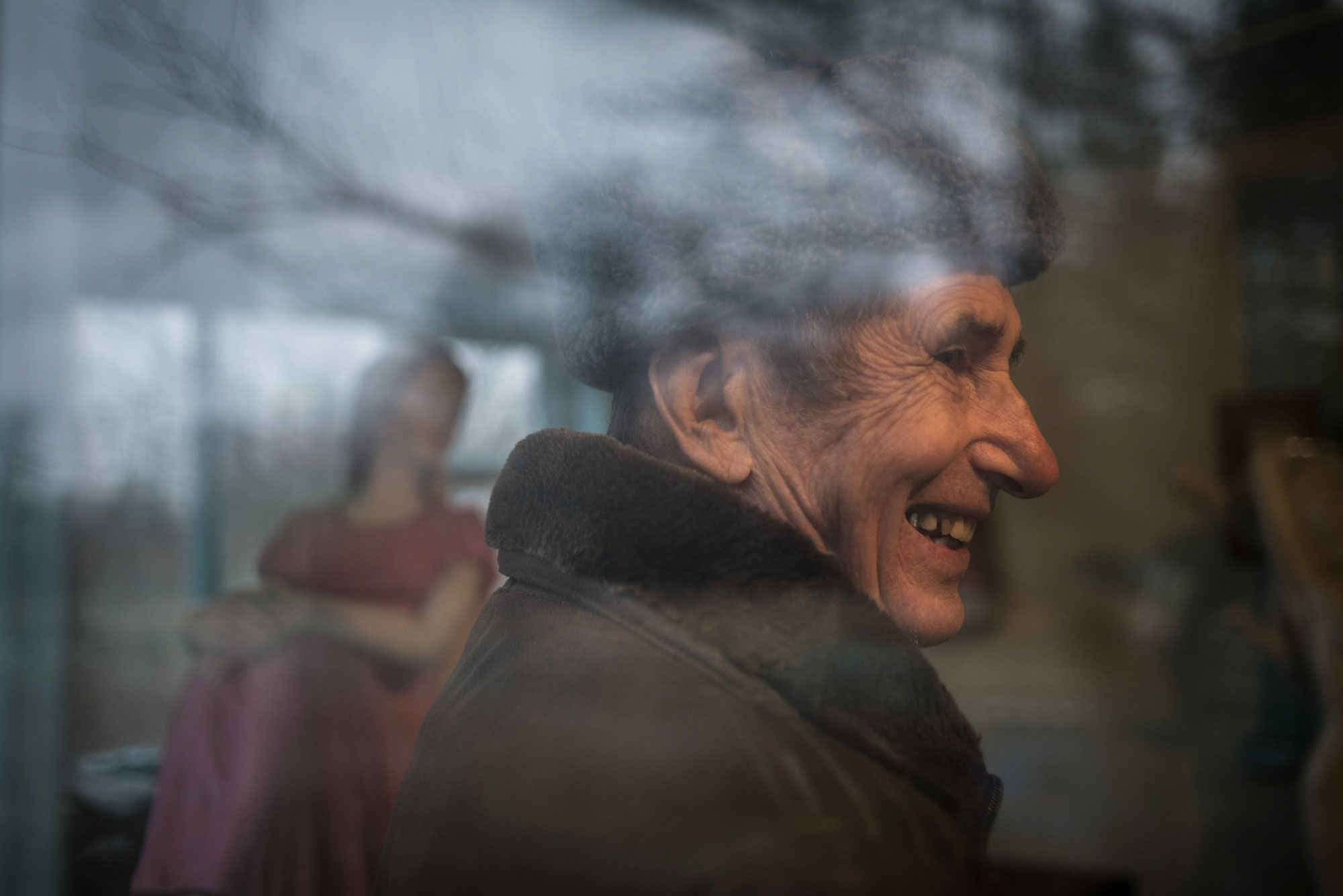
Details are the most important in life
Valerii calls his pictures “salon painting”. He doesn’t feel offended when people underestimate this style or treat it with disregard. He says it’s the basis of the craft:
— Picasso, a famous cubist, created his first works in XVIII century style. You see, to show off one has to know academism. He knew how to do it.
Valerii admits that he doesn’t like cubism: he wants people to look at the pictures, admire them, and find something close. He marks his flaws as well: his works lack brightness and volume… And then he shares his approach to art:
— I mix paints too much, that’s my weakness, I need to work on it. I need to paint more, I do it rarely. You have to be on fire! I had a burning desire to make this sculpture, and it turned out to be good. The next one will be a real masterpiece if I live long enough.
— You need to dive deep into everything you do, notice details. All details in this life are important to me.
Valerii shows us one more picture of his. The signature is capturing, “I am not alone as long as there are trees, birds, and the skies with you”. Love to his wife was his motto in life, now this is his motto. He says it’s not easy to be alone when all you have is sculptures.
How we were shooting
It’s about our hero’s welcome, about the drone above Panasivka, and about the visit to the Ukrainian Leadership Academy. It’s all in our video blog.

